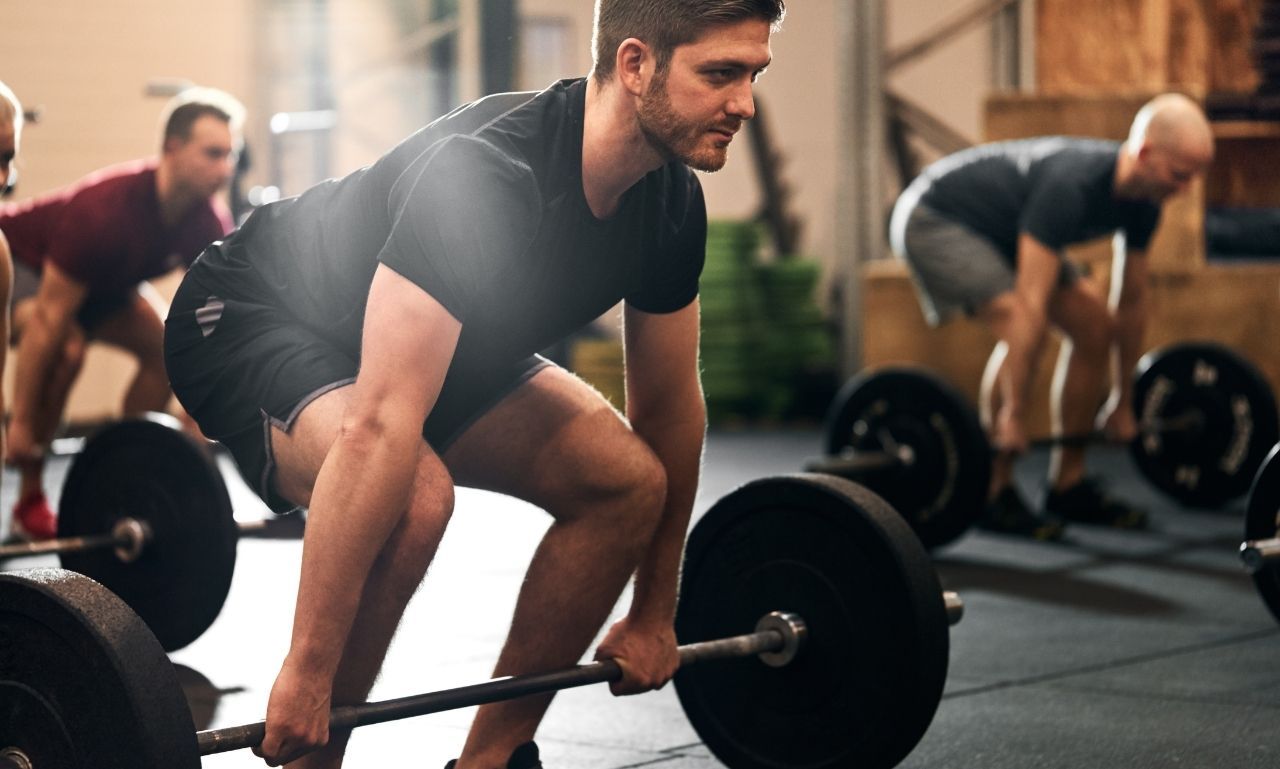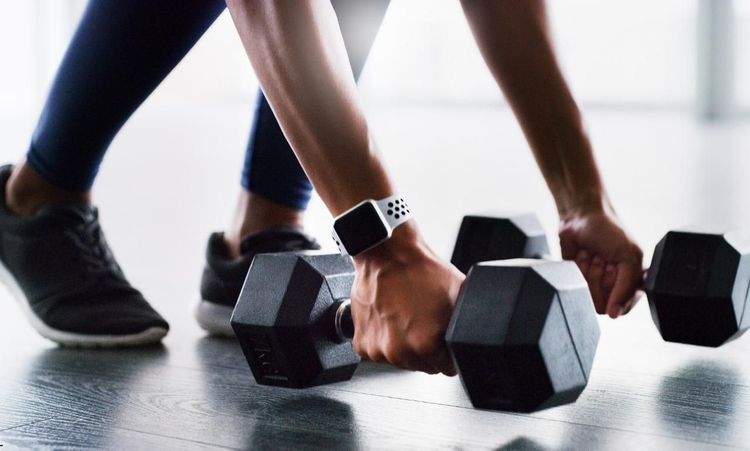Creating a workout routine from scratch is tough! I walked into my first gym back in 2008 and just stood there like a deer in headlights. There were so many machines, too many options. Where the heck should I even start? Most fitness "gurus" make this way more complicated than it needs to be. Some scream that you need to live in the gym. Others promise magical results from just 7 minutes a day. No wonder people get confused and quit!
You don't need fancy programs or expensive trainers. You just need to understand a few key principles. I'll break this down for you like I did for myself years ago.
Determine Your Starting Point

Your body isn't the same as your buddy's from work or that of Instagram fitness models. Your starting point has to match your current situation.
Ask yourself: Can you climb stairs without gasping for air? How's your back feeling these days? Do you have old injuries that flare up? Be brutally honest here.
Total beginners need to master basic movements first. If you can only do three push-ups right now, that's perfectly fine! Start there, not with some crazy chest routine you found online.
Do you already have some experience? Great—you can handle more complex stuff. Have you been training for years? You'll need specialized approaches to keep seeing changes.
Your goals matter too. Wanting to lose 20 pounds requires different training than prepping for a marathon. Write down precisely what you're aiming for. Vague goals produce vague results.
Where you start isn't essential. What counts is that you start and keep going. The person who consistently shows up for modest workouts crushes the occasional weekend warrior every single time.
What Exercises Should I Do To Lose Weight
Fat loss isn't about endless cardio on some soul-crushing treadmill. I learned this lesson the expensive way, burning hours on cardio machines with minimal results. What a waste!
Combining strength training with strategic cardio works. This one-two punch torches calories while preserving (or building) muscle.
HIIT workouts are my go-to recommendation. Thirty seconds of all-out effort followed by ninety seconds of recovery. Repeat. Simple but brutally effective.
You want exercises that give you the most return on investment. Squats, deadlifts, push-ups, and rows are compound movements that simultaneously recruit multiple muscle groups, cranking up your metabolism.
The biggest mistake is thinking you can out-train a bad diet. You absolutely cannot. I've tried. Trust me, no amount of exercise fixes consistently poor food choices.
People overcomplicate this stuff. Pick 4-6 compound movements. Perform them with good form. Progressively add weight or reps. Show up consistently. That's the "secret" formula nobody wants to sell you.
How Many Sets And Reps Should I Do?
The fitness magazines say one thing, but your buddy at work swears by something completely different. Who's right? The truth depends entirely on what you're trying to accomplish. Different goals require different approaches.
Want to get seriously strong? Stick to lower reps with heavier weights. Three to five sets of four to six reps usually do the trick. The last rep should be a real challenge.
Looking to build more muscle size? The sweet spot tends to be three or four sets of eight to twelve reps. This creates the right amount of tension and damage to stimulate growth.
For endurance, higher reps work better. Try two or three sets of 15 to 20 reps. You'll feel the burn, but that's precisely what builds stamina.
Beginners should keep things simple. Start with just two sets per exercise. Your body needs time to adjust to the new stresses you're putting on it.
Rest between sets matters, too. For strength, rest longer—two to three minutes. For muscle building, sixty to ninety seconds usually works best, while endurance training might only need thirty seconds.
Everyone responds differently. My buddy Tom grows muscle like a weed with heavy triples. My arms only grow when I hit the ten- to twelve-rep range. You should experiment a bit.
How Long Should I Wait Between Sets?
Rest periods aren't just about catching your breath. They directly impact the results of your workouts.
Need pure strength? Take longer breaks. Two to five minutes between heavy sets allows your nervous system to recover fully, and you'll lift more weight on your next set.
Building muscle requires balance. Too much rest kills the pump, and too little means you can't lift enough to stimulate growth. For most people, the sweet spot falls between sixty and ninety seconds.
Circuit-style training eliminates rest between exercises. You'll move straight from one movement to the next, only resting after completing the whole circuit. Talk about efficient!
I use a neat trick in my own workouts: alternating push and pull movements. While my chest recovers from bench pressing, I'll do rows for my back. This cuts down on rest time without sacrificing performance.
Your fitness level affects this, too. When I first started lifting, I needed way more recovery between sets. Now, I can bounce back faster. Your body adapts over time.
Pay attention to your performance drop-off. If your second set is drastically worse than your first, you probably need more rest.
I time my rest periods religiously. Otherwise, I'd probably waste half my workout scrolling through my phone between sets. Been there, done that!
How Much Weight Should I Lift?

This question stresses out gym newcomers more than anything else. Nobody wants to look weak, and nobody wants to get hurt.
For beginners, form trumps everything. I'd rather see you master movements with just your body weight than struggle dangerously under heavy loads.
Try this quick check: If you can't talk during your set, you're probably going too heavy. You should be able to speak in short, somewhat strained sentences.
Pick weights that make the last rep or two genuinely difficult for building strength. You need more weight if you're supposed to do five reps but could easily do ten.
Progress comes from gradually increasing the demands on your muscles. This principle—progressive overload—matters more than any specific starting weight.
Ladies, please don't worry about "getting bulky" from heavy weights. I've trained hundreds of women. It just doesn't happen without serious dedication and sometimes pharmaceutical assistance.
When trying new exercises, start lighter than you think necessary. Master the movement pattern first, then add the load. Your joints will thank you for this approach.
Different body parts can handle different loads. My legs can handle way more weight than my shoulders. That's completely normal. Don't expect everything to progress at the same rate.
How Long Should I Exercise?
For most people, a three-hour gym session is a complete waste of time. Quality beats quantity every day of the week.
Are you just starting out? Thirty to forty-five minutes is plenty. You'll get excellent results without excessive soreness or burnout. Build the habit first, then worry about optimizing.
Most solid strength workouts last 45 to 60 minutes. This gives you enough time to warm up properly and hit all your major movement patterns.
HIIT sessions can be brutally practical in just twenty minutes. The intensity makes up for the shorter duration, making them perfect for busy days when time is tight.
The research shows diminishing returns for natural lifters after about an hour. Hormone levels shift in ways that can hurt your progress. Longer isn't better!
Don't skimp on your warm-up. A proper five—to ten-minute warm-up prevents injuries and boosts performance. Consider it part of your workout time.
The best workout length? Whatever you'll do consistently. Three thirty-minute sessions you complete beats one "perfect" ninety-minute workout you skip half the time.
How To Create Supersets And Circuit Training Workouts
When time is tight, supersets and circuits become your best friends. These techniques pack more work into less time. They're game-changers for busy people.
Supersets pair two exercises back-to-back with minimal rest. You complete both before taking a break. It's like getting two exercises for the price of one rest period.
Try pairing opposing muscle groups: chest and back, biceps and triceps, quads and hamstrings. While one muscle works, the other recovers—smart efficiency!
For a real burner, try compound supersets—two exercises for the same muscle group. For example, a bench press is immediately followed by push-ups. Your muscles will scream, but they'll grow!
Circuits take this concept even further. You'll perform a series of exercises one after another, only resting after completing the full circuit. Five to ten exercises work well for most people.
When building your circuits, include a variety of movements. Push something. Pull something. Do a leg exercise. Include something for your core. This creates balanced development.
Don't overcomplicate things when you're starting. A simple circuit of three or four exercises will challenge you plenty. Add complexity as your fitness improves.
Want to burn more fat? Throw some jumping jacks or mountain climbers between strength exercises. These "cardio stations" keep your heart rate elevated throughout.
Even with these intense techniques, strategic rest matters. Take a minute or two between complete superset pairs or full circuit rounds. This maintains the quality of your work.
How Many Days Per Week Should I Train?

The perfect training frequency isn't the same for everyone. Your recovery ability, schedule, and goals all influence the ideal approach.
For most people seeking general fitness, three to four weekly training sessions hit the sweet spot: enough stimulus to drive progress and enough recovery to prevent burnout.
Complete beginners do best with two or three full-body workouts each week. This frequency builds essential strength while allowing plenty of recovery between sessions.
More advanced folks might benefit from training four to six days weekly. This higher frequency allows for specialized split routines, focusing on different body parts daily.
Always include at least one complete rest day every week. Your body improves during recovery, not during the actual workouts. Respect this process!
Your overall stress load affects your recovery needs. Are you working on a tough project? Are kids keeping you up at night? You might need extra recovery days during these periods.
I've found that some people thrive on higher frequency with lower volume per session. Others prefer fewer, more intense workouts. Experiment to find your personal sweet spot.
Remember this above all else: consistency trumps everything. Three workouts you complete every week beats a "perfect" six-day split you can't maintain.
Conclusion
Building your workout routine isn't rocket science. The fitness industry just wants you to think it is so you'll keep buying their stuff.
Start where you are right now. Be honest about your current fitness level. Choose exercises that match your goals and abilities. Get the sets, reps, and rest periods in the right ballpark.
Use weights that challenge you without breaking you. Schedule workouts that fit your real life, not some fantasy schedule. Consider efficiency boosters like supersets when time is tight.
Find a weekly training frequency you can maintain. The perfect workout on paper means nothing if you can't stick with it.
Success comes from consistent effort over time, not from perfect programming. Minor improvements add up to massive changes when you stay the course.
The best time to start was yesterday, and the second best time is today. Your future self will thank you for taking action now. Get after it!




